Похожие презентации:
06-Understanding JavaScript and Coding Essentials
1. Understanding JavaScript and Coding Essentials
• Vyacheslav KoldovskyyLast update: 27/08/2015
2. Agenda
Basic Information
How to include JS Code into HTML
Comments
Variables
Data Types
Type Casting
Functions in JS
Input and Output
JS Code Processing
• Declaration and Expression
3.
Basic Information aboutJavaScript
4. Basic information
JavaScript - dynamic computer programminglanguage.
It is most commonly used as part of web browsers,
whose implementations allow client-side to interact with
the user, control the browser and asynchronously
communicate with server-side.
JavaScript syntax was influenced by C.
5. Basic information
JS take many names and naming conventions from Java,but the two languages are otherwise unrelated and have
very different semantics. [1]
JavaScript is a prototype-based scripting language with
dynamic typing. [2]
JS supported object-oriented, imperative and functional
programming styles. [3]
6.
How to include JS Codeinto HTML
7. Including of JavaScript
Exist three ways to include script intoHTML page:
• Inline in HTML [1]
• Inside tag <script>
• In separate file [3]
[2]
8. Inline including
<button onclick = “f();”>…. </button>Unfortunately, this is the worst solution.
Holistic code will be broken into smaller parts.
Such parts are difficult to test and maintain. :(
9. Inside tag <script>
Inside tag <script><script>
f() ;
</script>
Sometimes it makes sense.
But in the general case, page size will be increased
and, as a result, its performance reduced.
10. In separate file
<script src = “somewhere.js”></script>This is the best way.
Code is holistic. It’s easy to test and maintain.
In addition, separated files are cached by the browser.
This improves performance. :)
11.
Comments12. Comments
Comments - part of the program text which will beignored by language interpreter [1]
The /* characters, followed by any sequence of
characters (including new lines), followed by
the */ characters. [2]
The // characters, followed by any sequence of
characters, but only in current line. Therefore, it is
commonly called a "single-line comment." [3]
13.
Variables14. Variables
Variable – symbolic name associated with a valueand whose associated value may be changed. [1]
Declaration – process of variable's specifying.
Usually declaration consist of defining: type, name
and default value of variable. [2]
A process in which a variable is set to its first value is
called initialization. [3]
15. Declaration and initialization
var – special keyword for declaration of variablesIn JavaScript
var variable;
variable = 10;
//declaration
//initialization
[2]
Or quickly
var variable = 10;
[3]
[1]
16. Global and local
JavaScript has two types of variables:global - exist in memory and is available at all times
of the program. In JS it's a variables of page. [1]
local - exist in memory and is available only in block
when variable is defined. In JS it's defined in function
variables. [2]
17.
Data Types18. Data types
JavaScript have 6 base data types:• Number – scalar type for integer and real digits
• Boolean – scalar type for logical values
• String – special type for work with text information
• Undefined – special type for uninitialized variables
• Null – special type for "cleaning" of variables
• Object – complex type for service and user needs
19. Number, Boolean and String
var n = 10; or var n = Number(10);//number values for example: -1, 10, 3.14, Nan, Infinity
var b = true; or var b = Boolean(true);
//bollean values: true and false
var s = “text”; or var s = String(“text”);
//string values for example: “”, “text”, ‘text’
[1]
[2]
[3]
20. Null and Undefined
var n = null;//null variables can have only null value
[1]
var u;
// created and uninitialized
And Object type… but it will be reviewed in future :)
21.
Type Casting22. Type casting
Exist two types of casting:var a, b, c;
a = 10;
b = true;
c = a + b;
[1]
Explicit
Implicit
[2]
var a, b, c;
a = 10;
b = true;
c = a + Number(b);
But both ways given c =11 as a result!
[3]
23. Type casting
Base rules of typing casting:[1]
[2]
[3]
[4]
All scalar types try to convert itself to largest scalar
type: Boolean to Number, Number to String.
If Boolean converted to String it at first converted to
Number and after them Number to String.
In mathematical operations (excluding +) String
should be converted to Number.
Null and Undefined converted to String as “null” and
“undefined”, and to Number as a 0 and NaN
24.
Functions in JS25. Basic Information
In mathematics:Function is a relation between a set of inputs and a set
[1]
of permissible outputs.
y = f(x)
[2]
In classical programming
Function is a named part of a code that performs a
[3]
distinct service.
26. Example
var i, base, power, result;[1]
base = 2; power = 2; result = 1; [2]
for(i = 0; i < power; i++) { [3]
result *= base;
}
console.log(result); [4]
base = 3; power = 4; result = 1;
for(i = 0; i < power; i++) {
result *= base;
}
console.log(result);
[5]
27. Declaration of function
function is a special keyword for creation of function[1]
in JavaScript.
function name () {
body;
}
[2]
28. Example
var i, base, power, result;base = 2; power = 2; result = 1;
for(i = 0; i < power; i++) {
result *= base;
}
console.log(result);
base = 3; power = 4; result = 1;
for(i = 0; i < power; i++) {
result *= base;
}
console.log(result);
29. Example
function pow () {result = 1;
for (var i = 0; i < power; i++) {
result *= base;
}
}
30. Function call
Call - operation for execution of function.( ) – operator for this action.
[1]
[2]
Usually function can be called by name.
[3]
31. Example
var base, power, result;base = 2; power = 2;
pow();
console.log(result);
base = 3; power = 4;
pow();
console.log(result);
function pow () {
result = 1;
for(var i = 0; i < power; i++) {
result *= base;
}
}
32.
Input and Output33. Input and Output
function name (a, b) {return a + b;
}
[1]
* you can return one value only
[2]
* return always interrupts the execution.
[3]
* place your return at the end of a function
[3]
34. Example
function pow () {result = 1;
for (var i = 0, i < power; i++) {
result *= base;
}
}
35. Example
function pow (base, power) {var result = 1;
for (var i = 0, i < power; i++) {
result *= base;
}
return result;
}
36. Example
var out;out = pow(2, 2);
console.log(out);
out = pow(3, 4);
console.log(out);
function pow (base, power) {
var result = 1;
for(var i = 0; i < power; i++) {
result *= base;
}
return result;
}
37.
JS Code Processing38. Code processing
var a = 10;test();
function test () {
a = 30;
var b = 40;
}
var b = 20;
console.log(a, b);
39. Code processing
1.var a = 10;
test();
function test () {
a = 30;
var b = 40;
}
var b = 20;
console.log(a, b);
40. Code processing
2.1.
3.
var a = 10;
test();
function test () {
a = 30;
var b = 40;
}
var b = 20;
console.log(a, b);
41. Code processing
2.4.
1.
5.
3.
6.
var a = 10;
test();
function test () {
a = 30;
var b = 40;
}
var b = 20;
console.log(a, b);
42. Code processing
2.4.
1.
5.
3.
6.
var a = 10;
test();
function test () {
5.2
a = 30;
var b = 40; 5.1
}
var b = 20;
console.log(a, b);
43.
Declaration andExpression
44. Declaration and Expression
function name () {body;
}
var name = function () {
body;
};
[1]
[2]
45. Additional Facts About Functions
Functions in JavaScript are Objects.As a result, functions are accessible by
reference.
[1]
[2]
Functions can be used as a parameter in other
[3]
function.
References to functions can be saved in any[4]
other variable.
46. Practice Task
47. Contacts
Europe HeadquartersUS Headquarters
52 V. Velykoho Str.
Lviv 79053, Ukraine
12800 University Drive, Suite 250
Fort Myers, FL 33907, USA
Tel: +380-32-240-9090
Fax: +380-32-240-9080
Tel: 239-690-3111
Fax: 239-690-3116
E-mail: info@softserveinc.com
Website: www.softserveinc.com
Thank You!
Copyright © 2010 SoftServe, Inc.
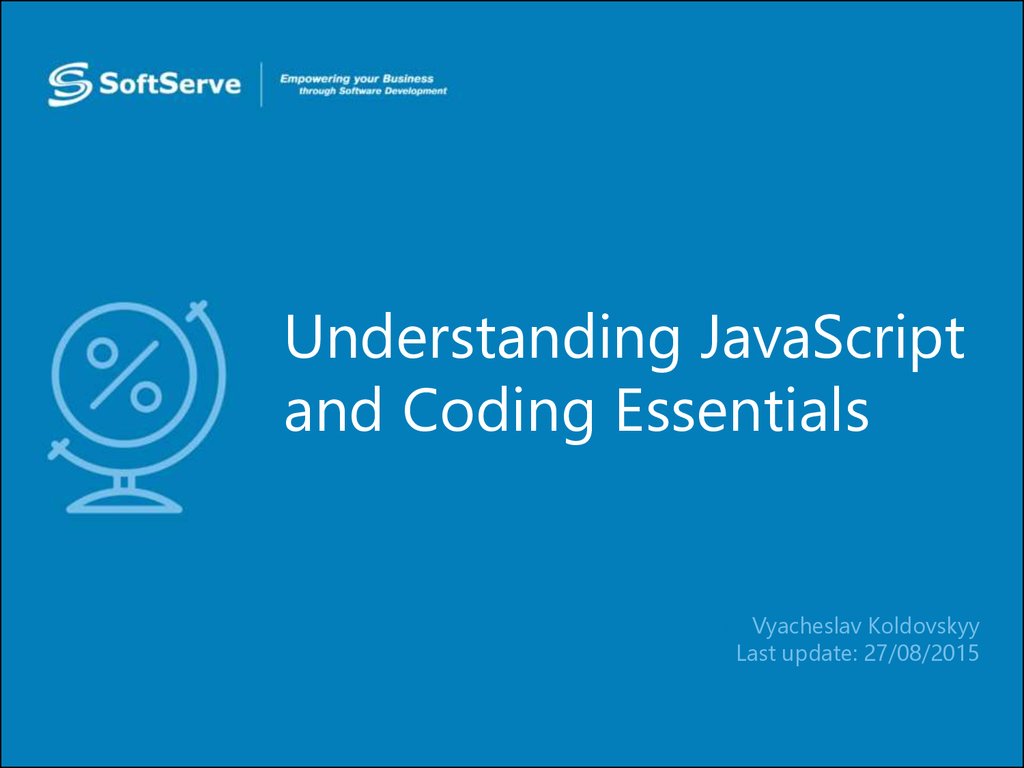

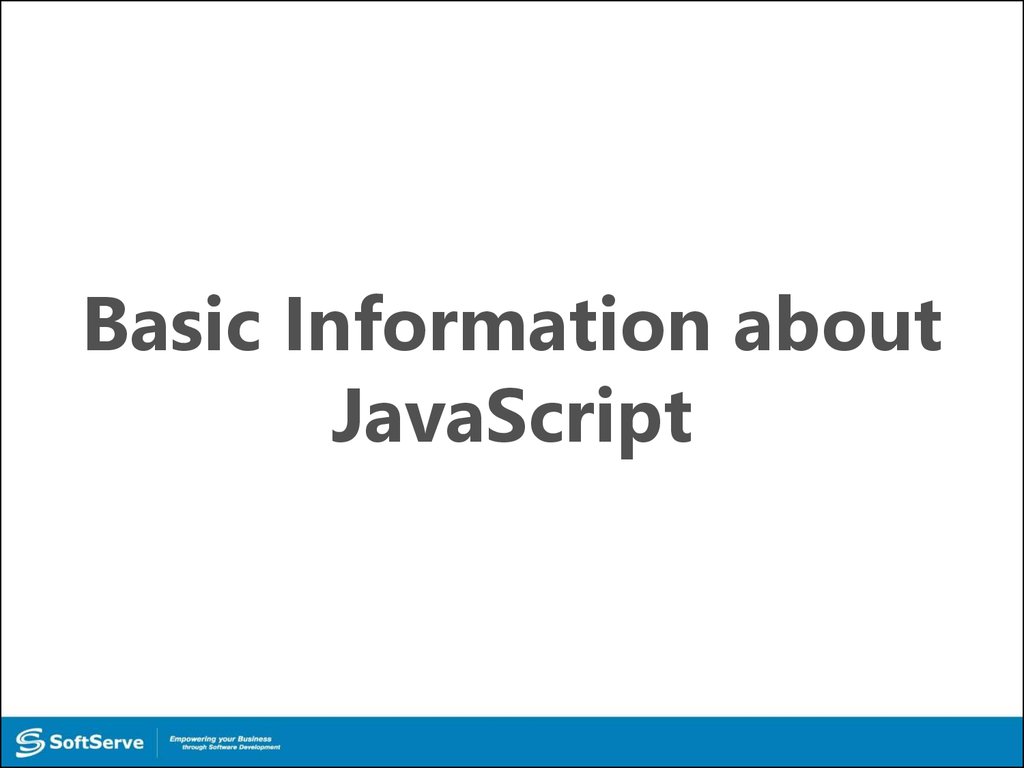

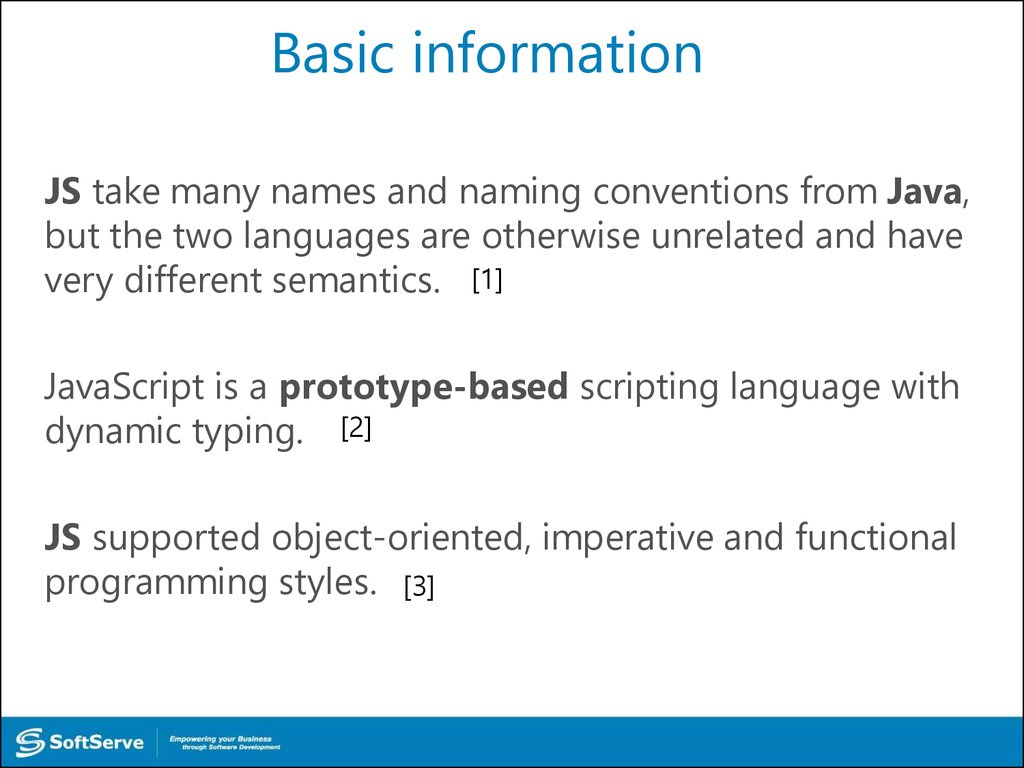
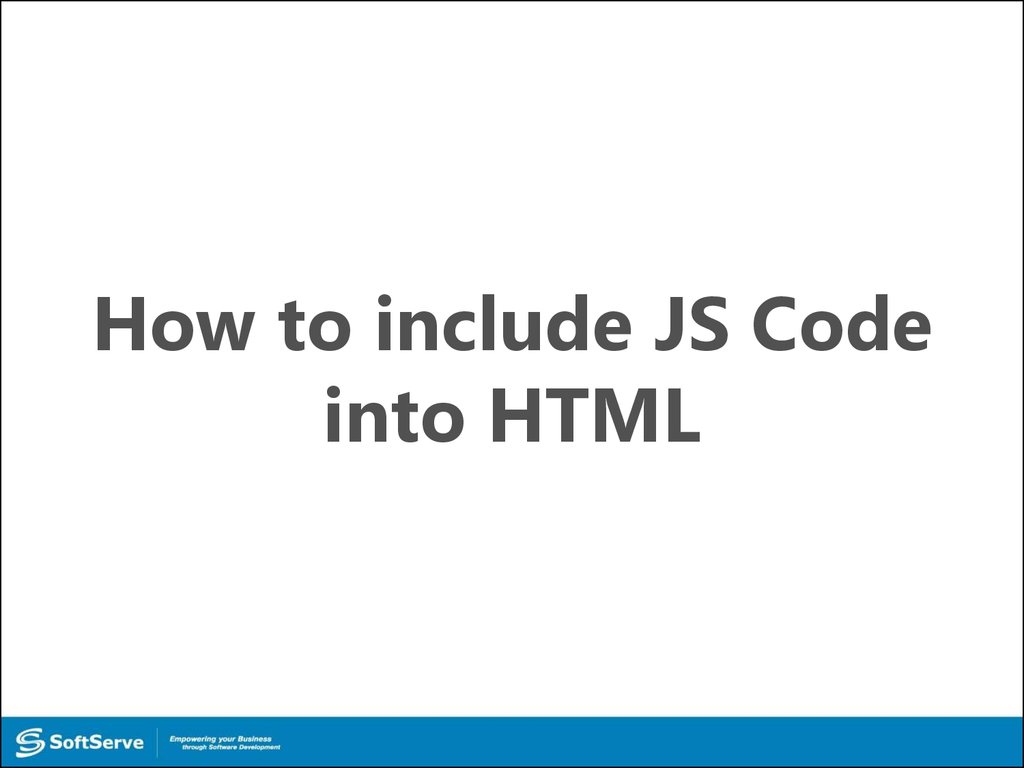
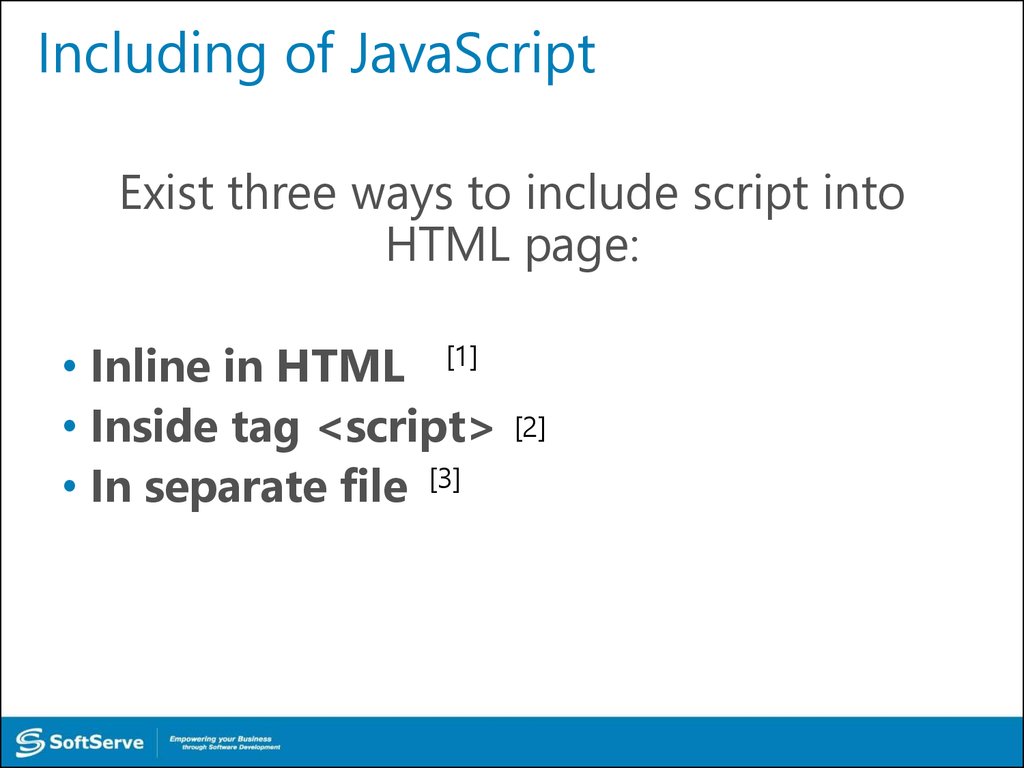

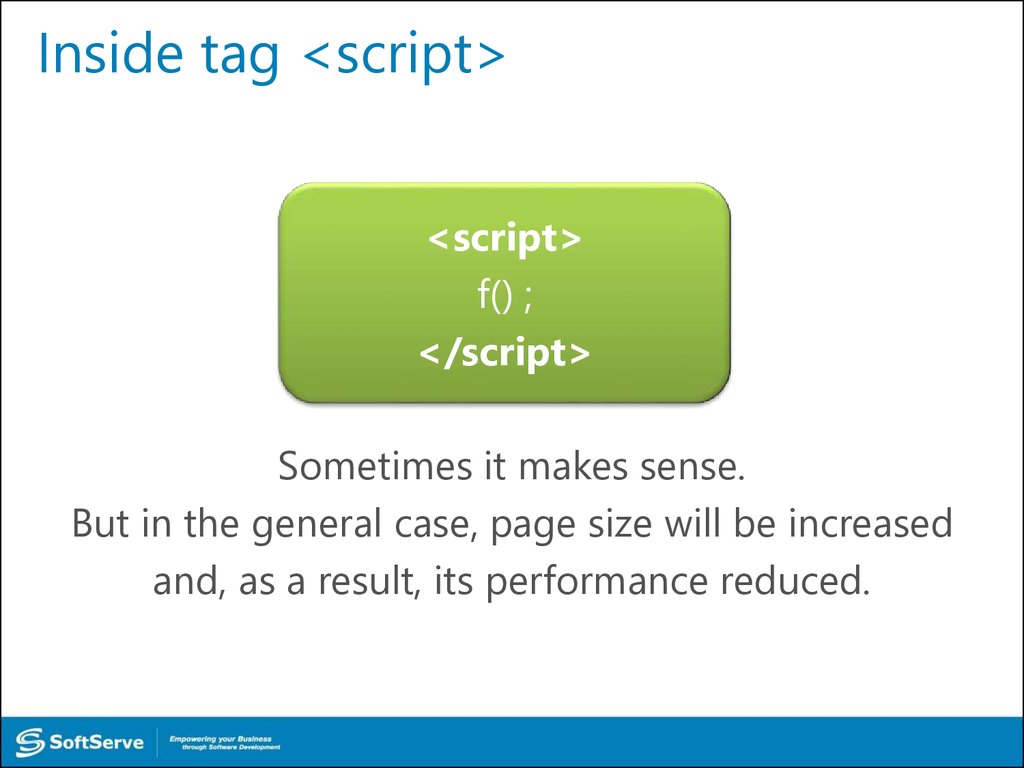
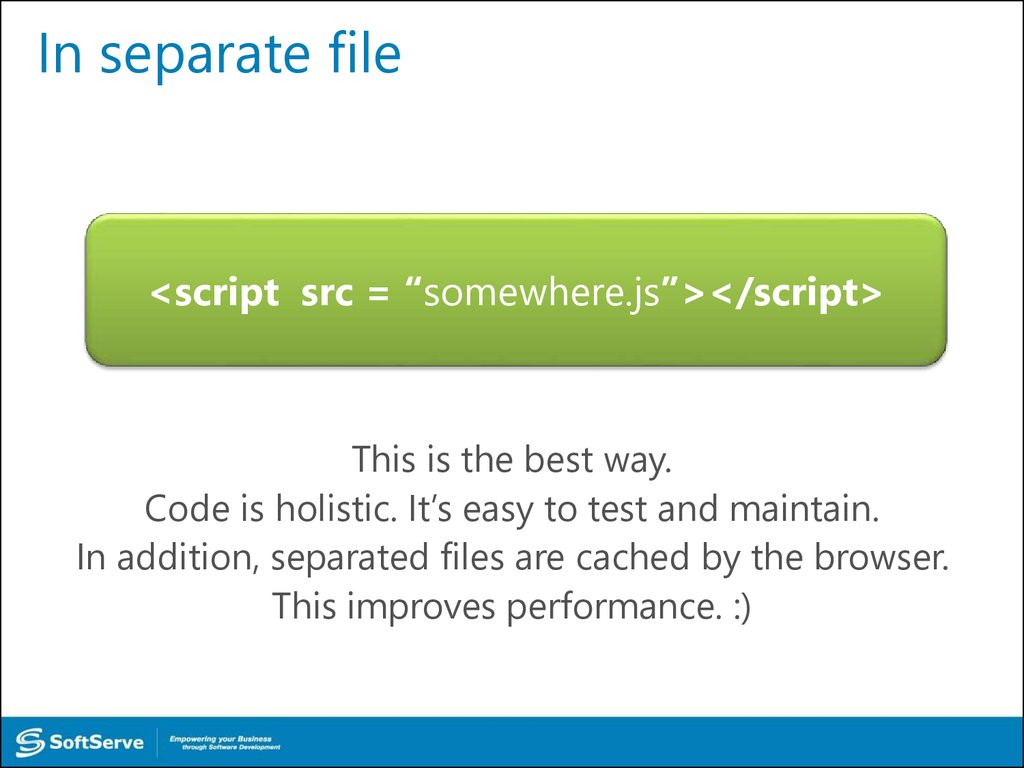

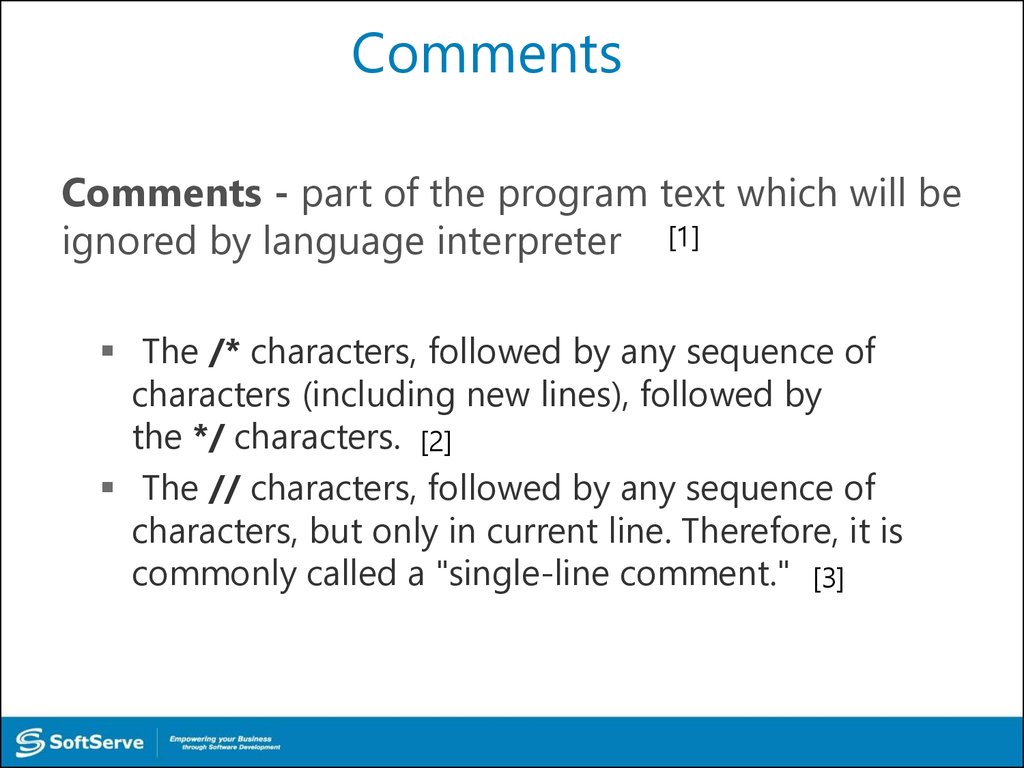
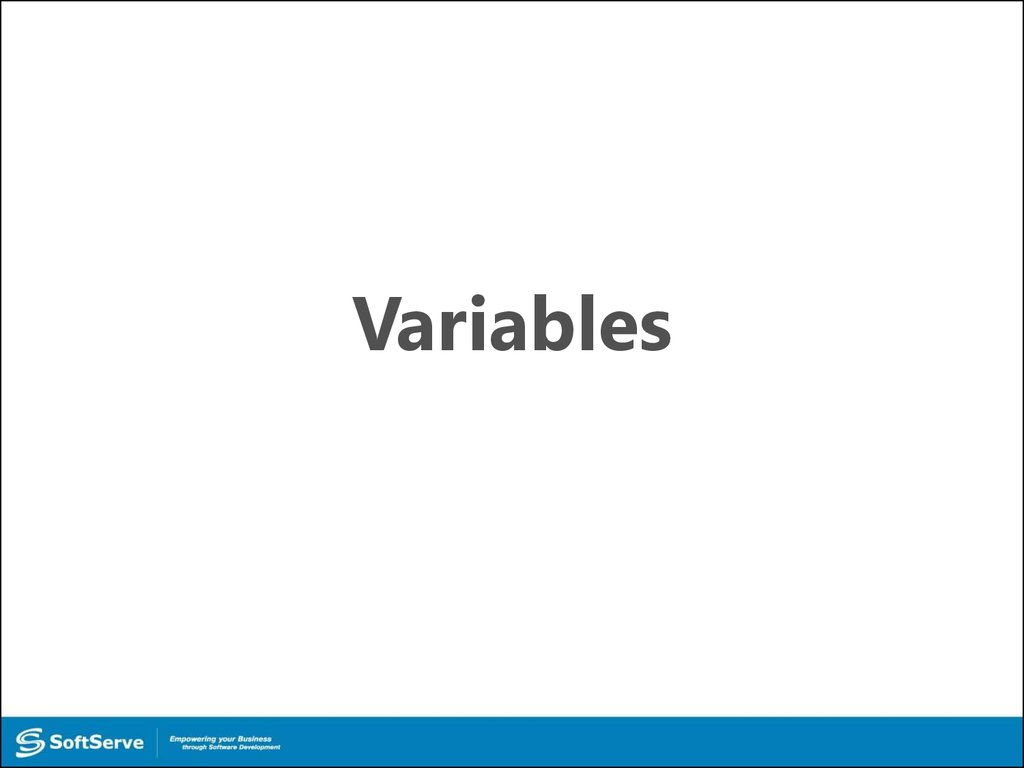
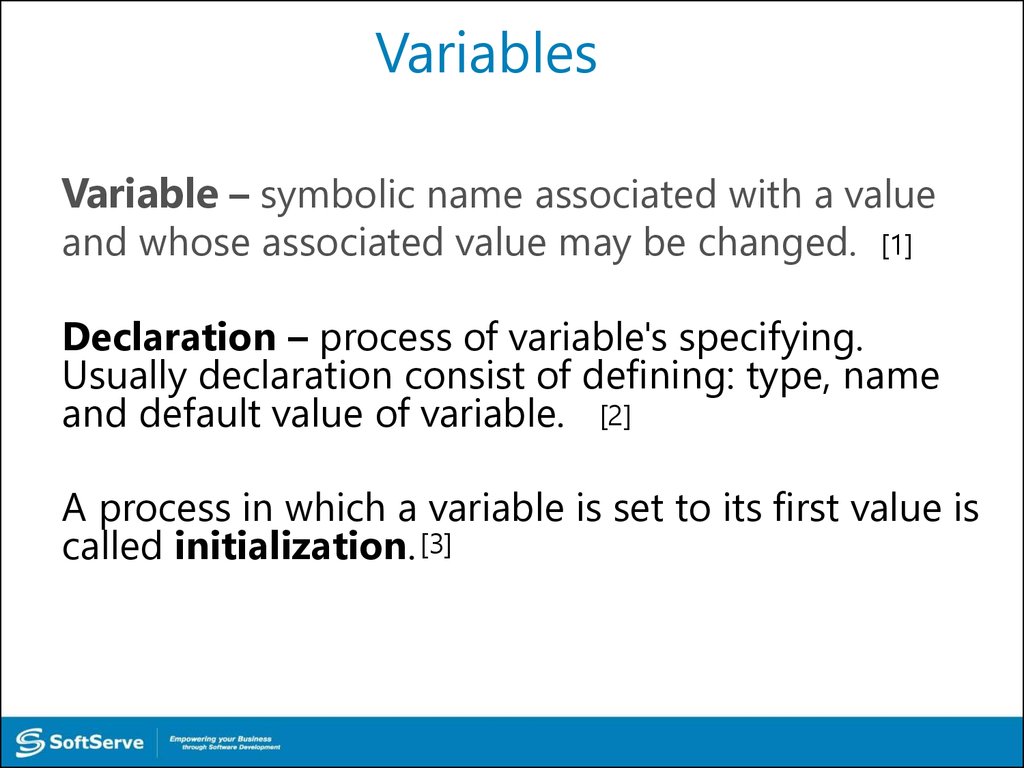
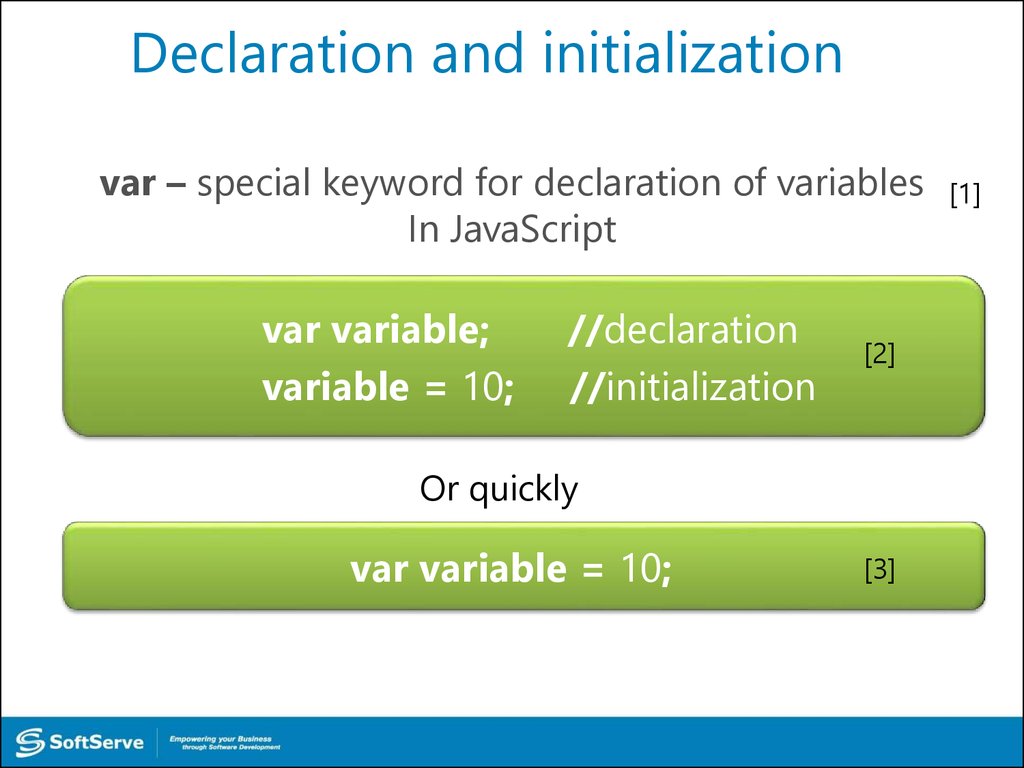
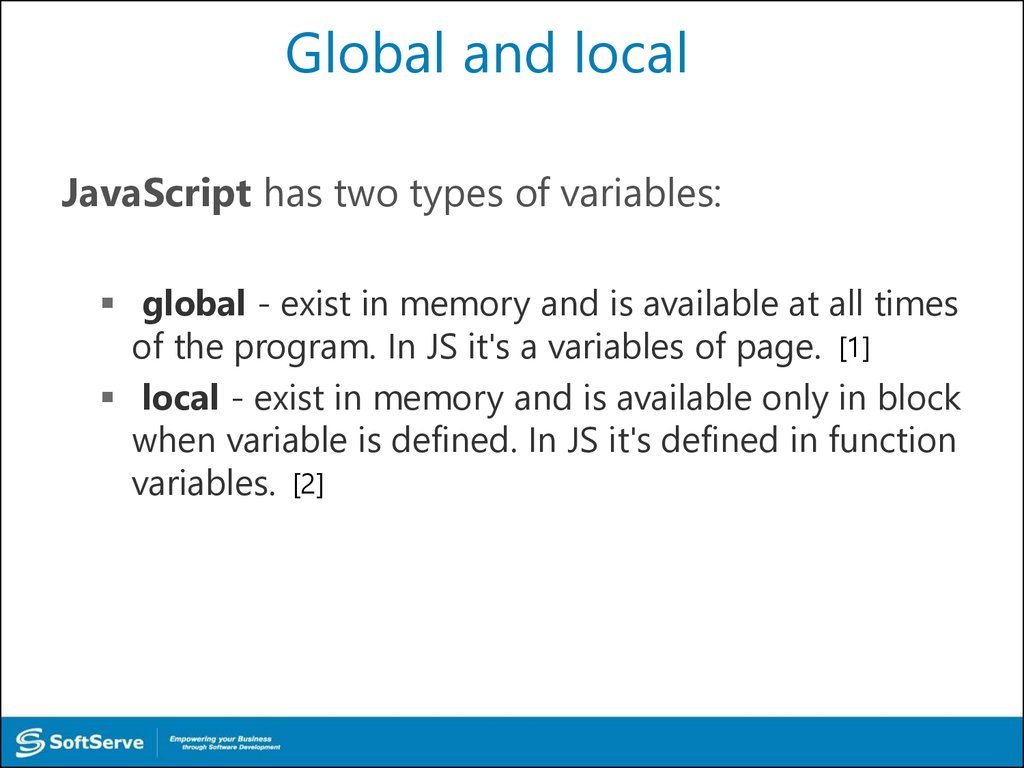
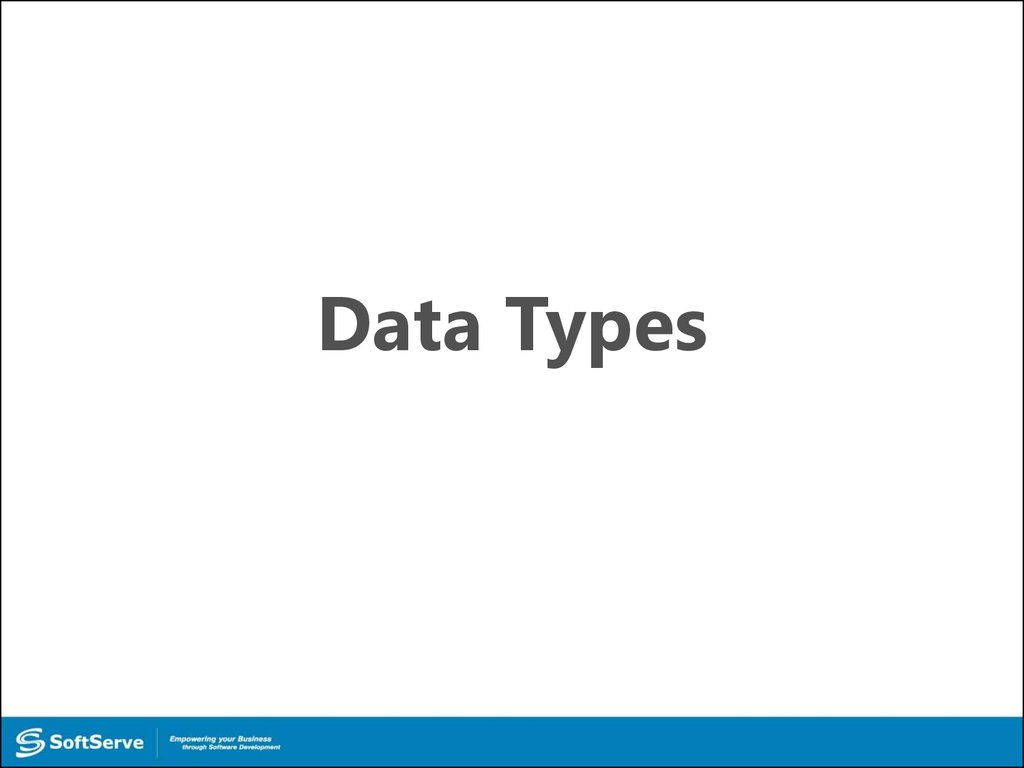
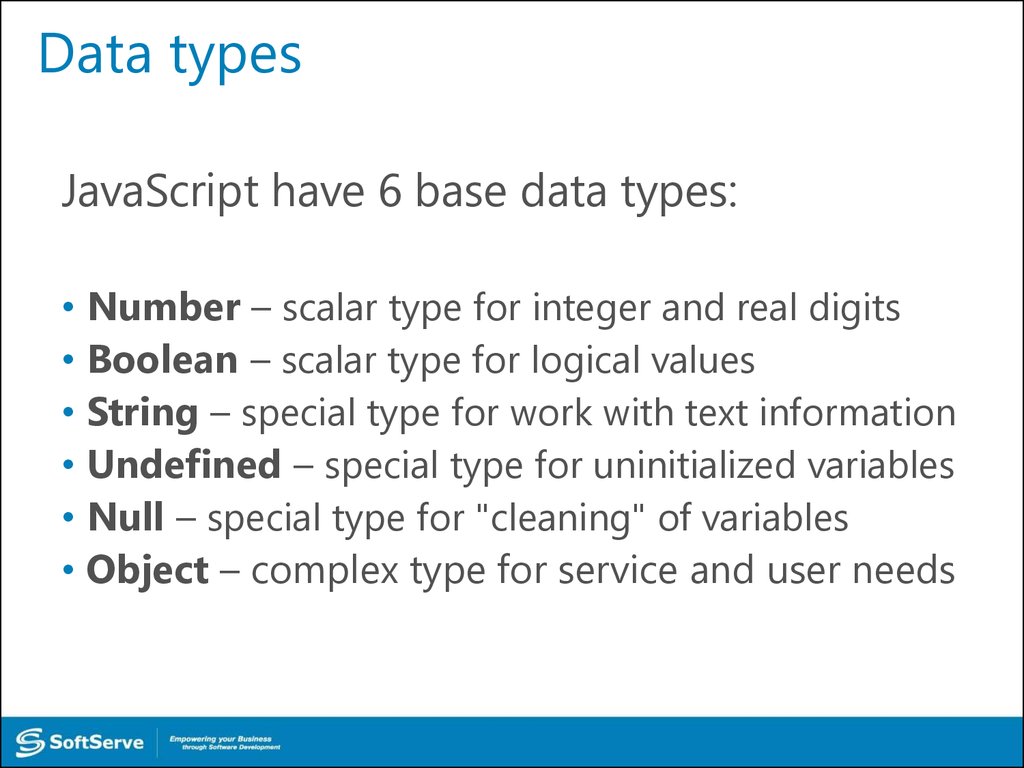
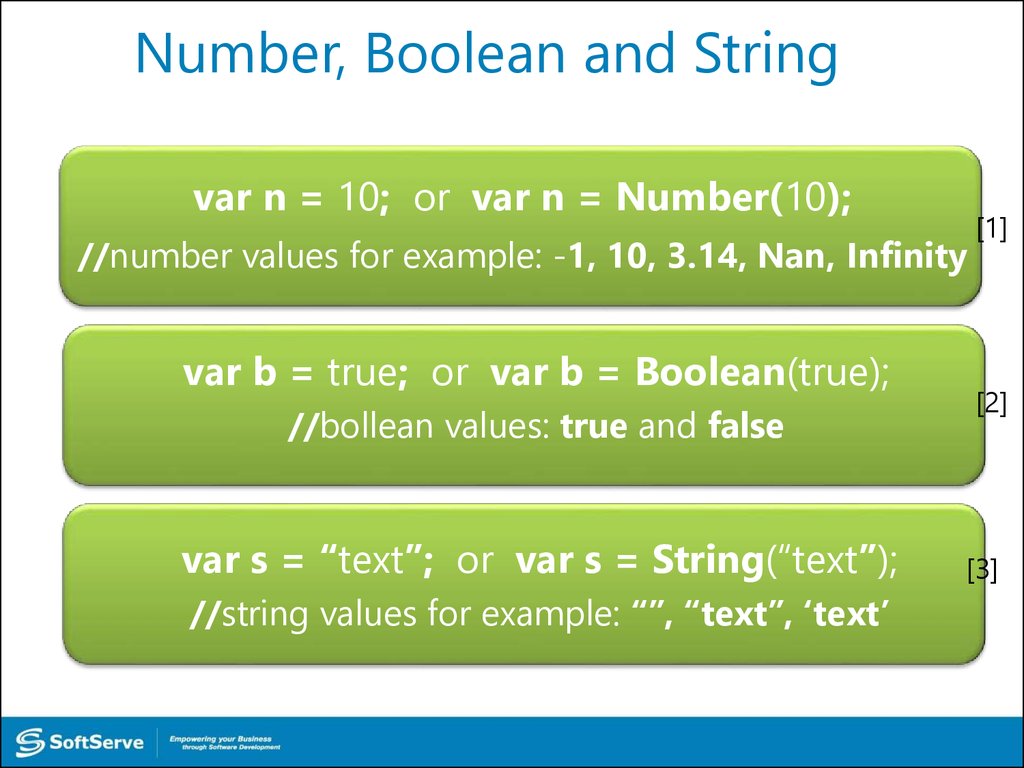
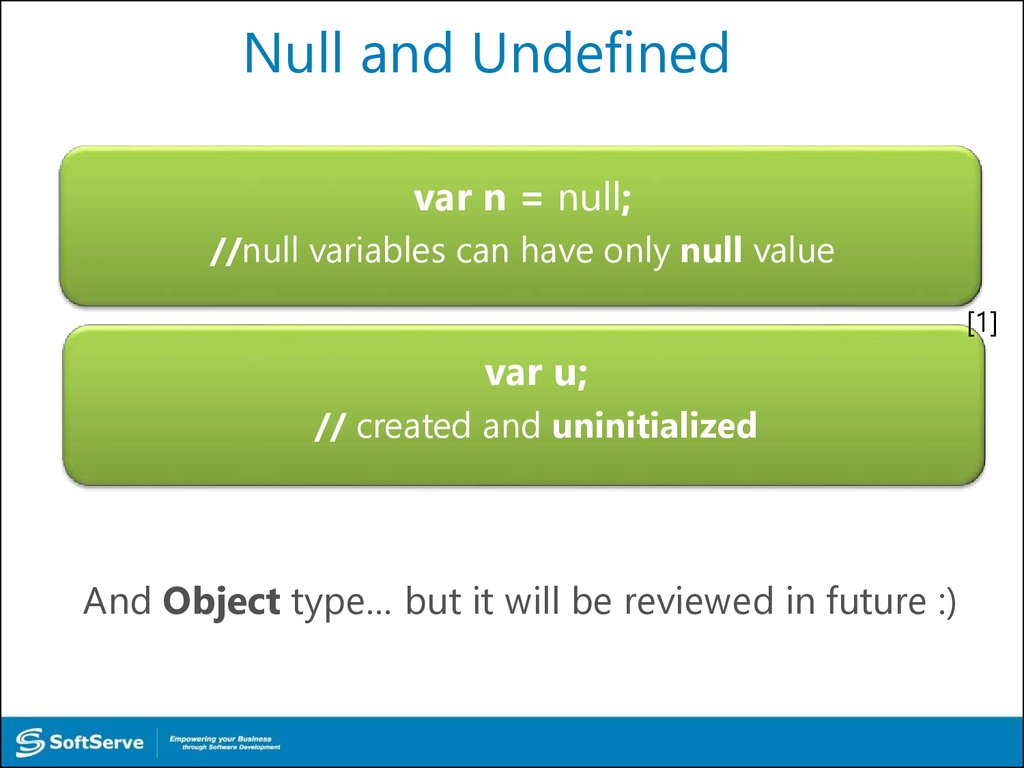

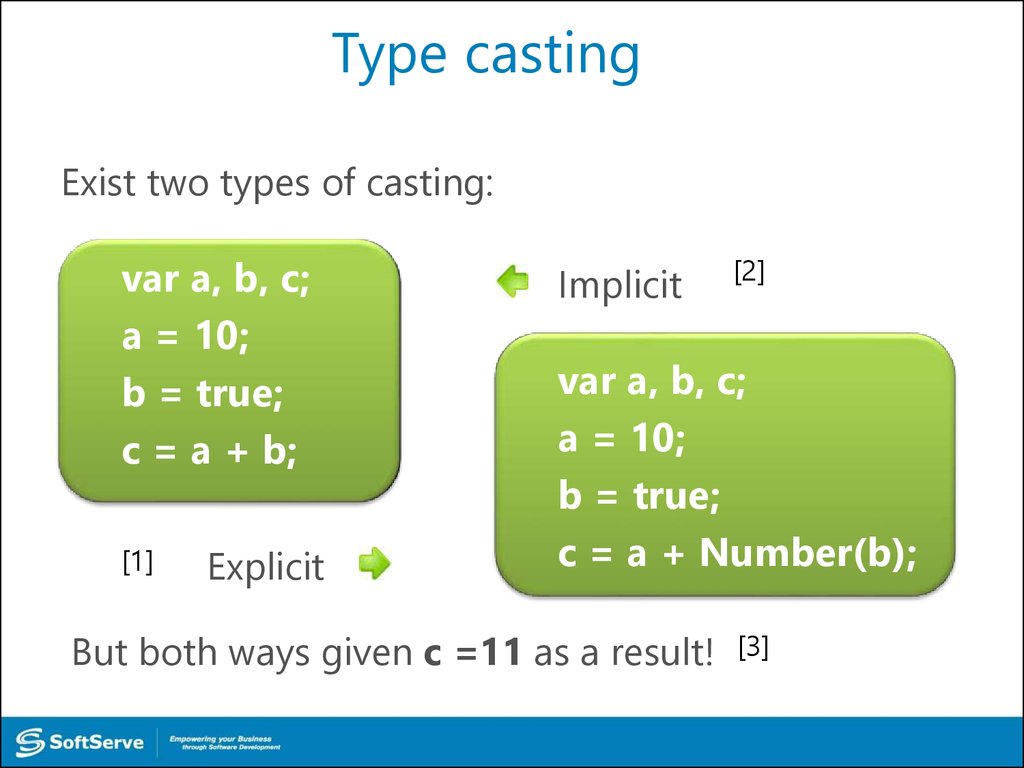
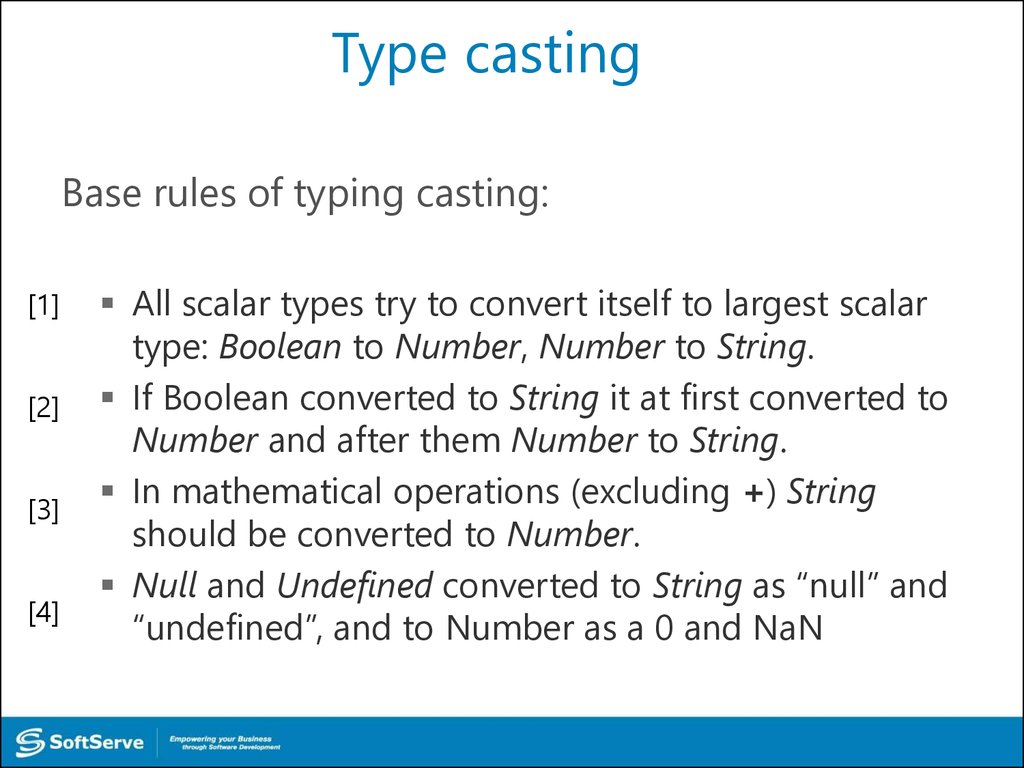
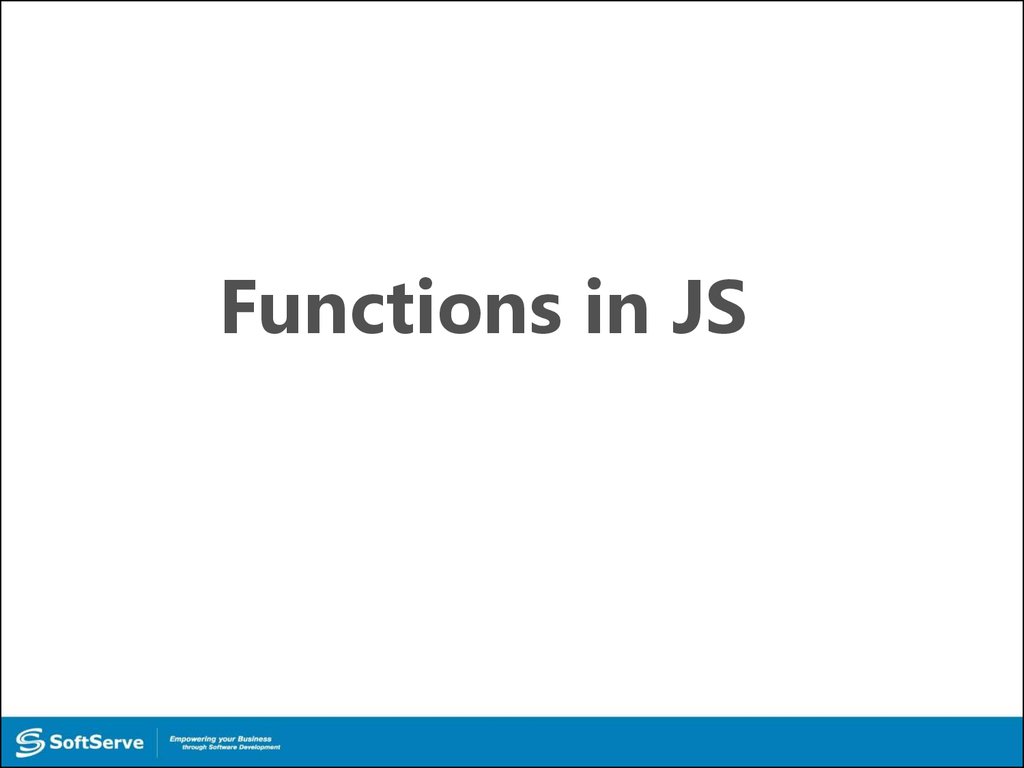
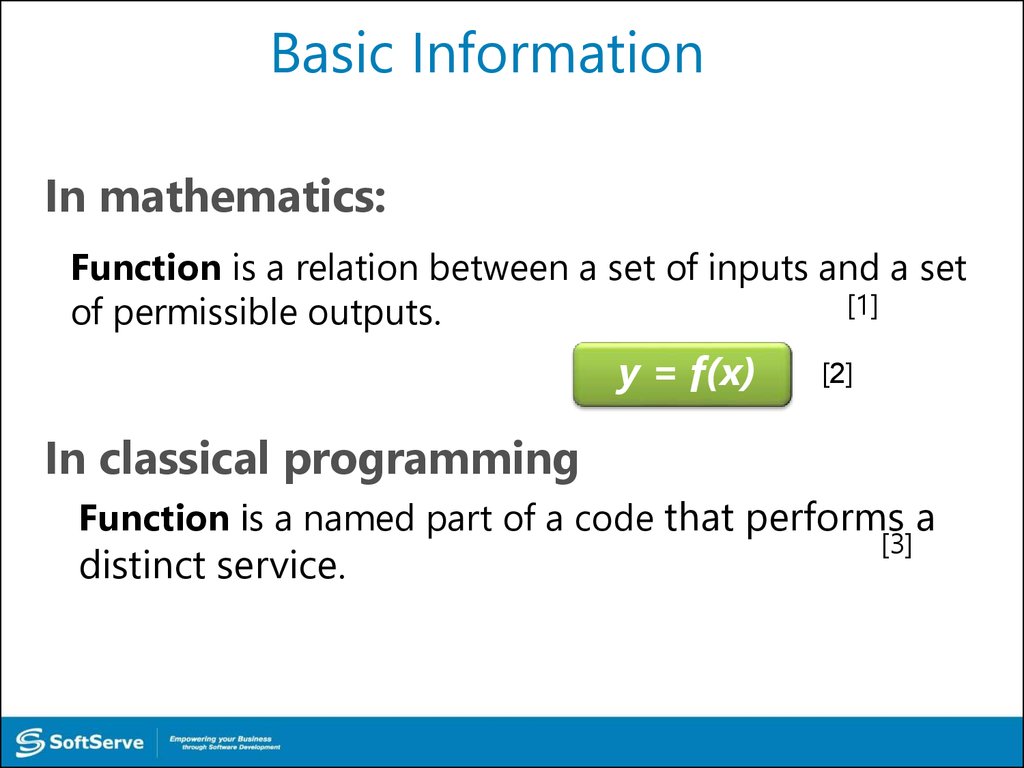
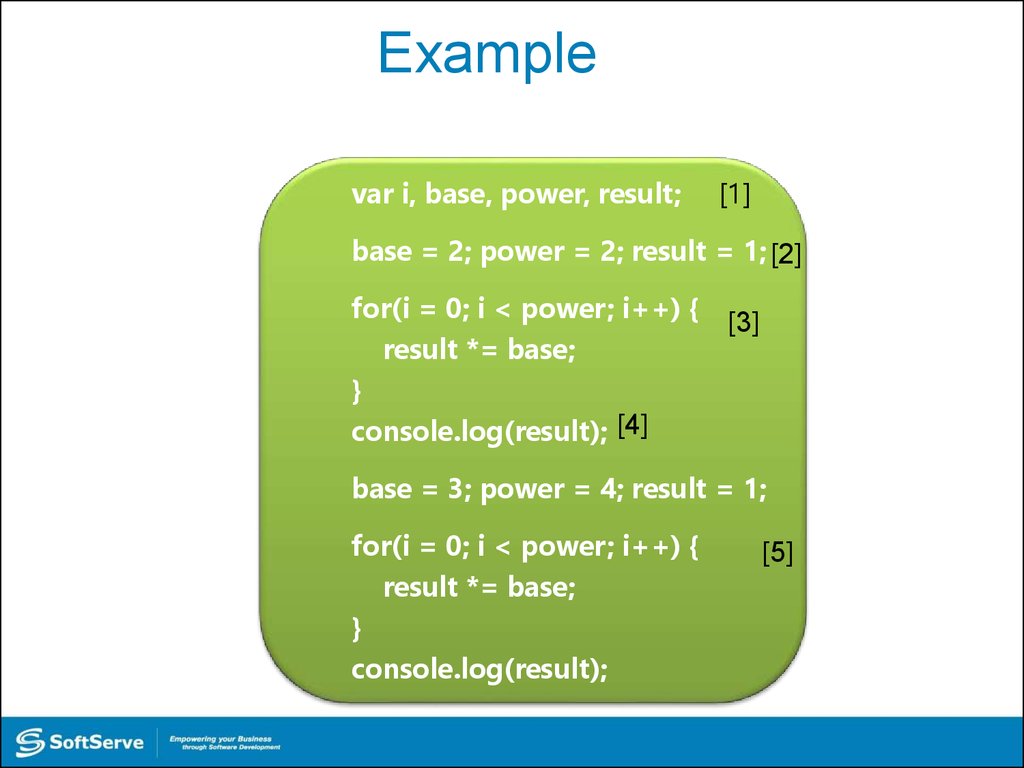
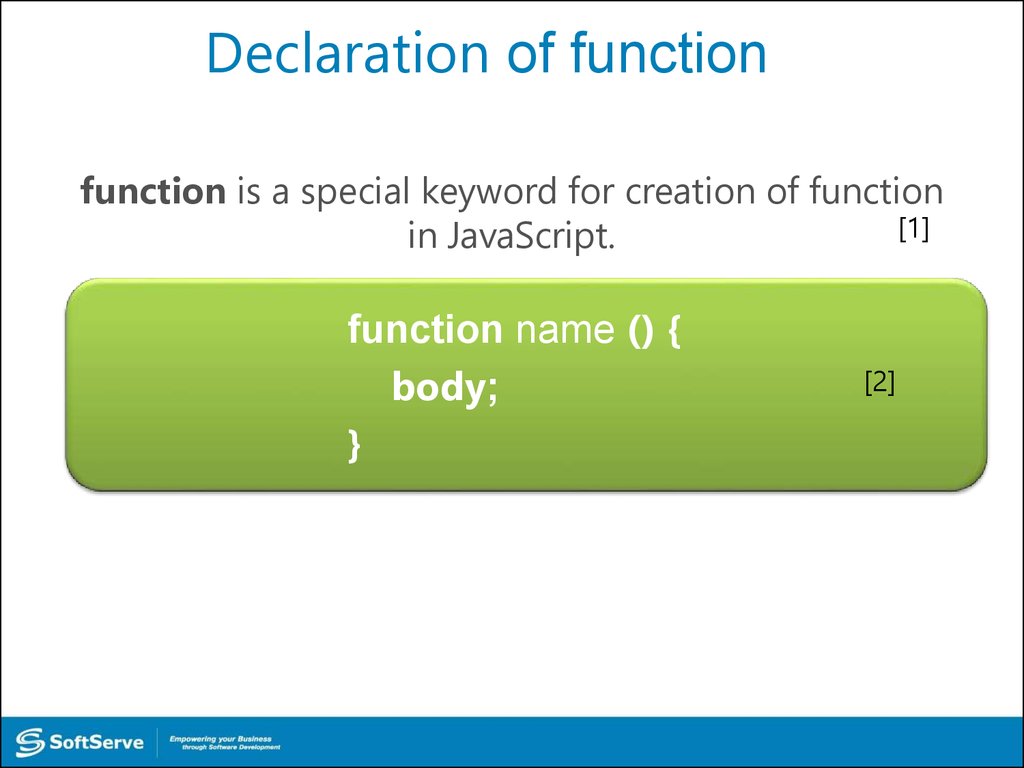
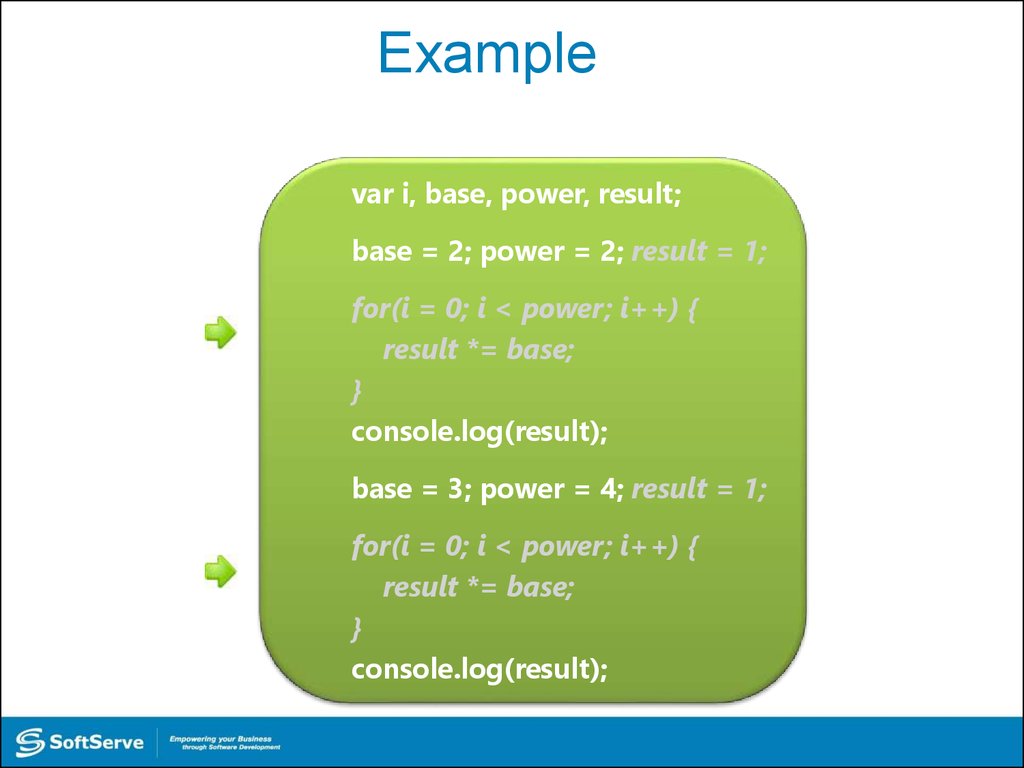
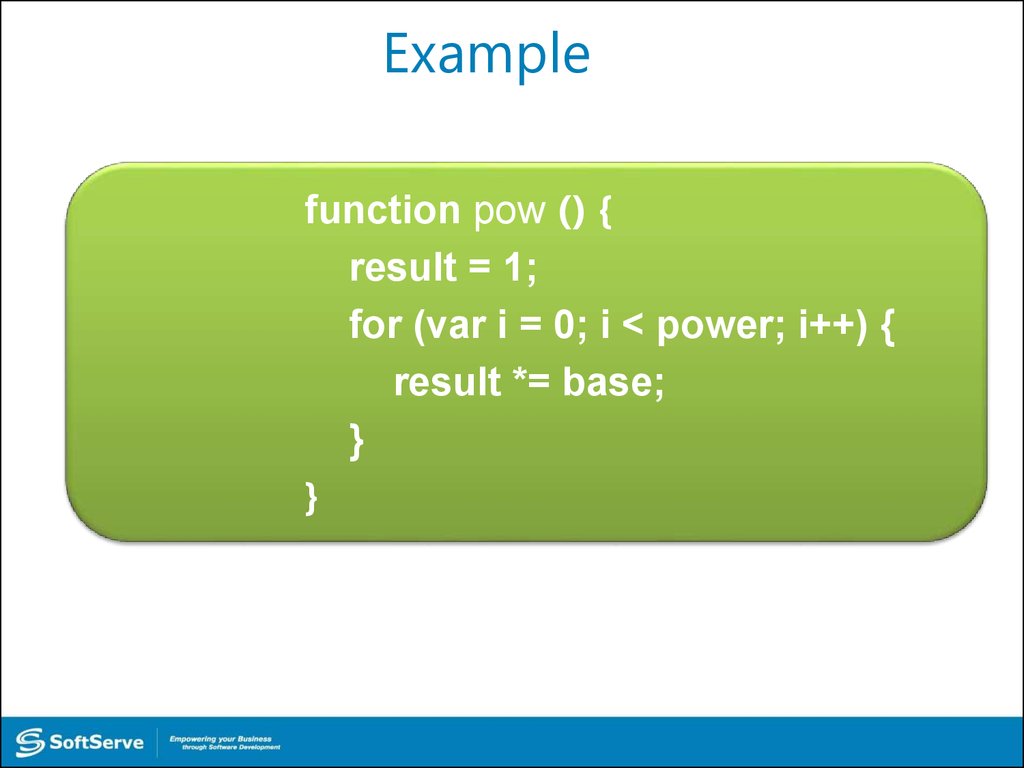
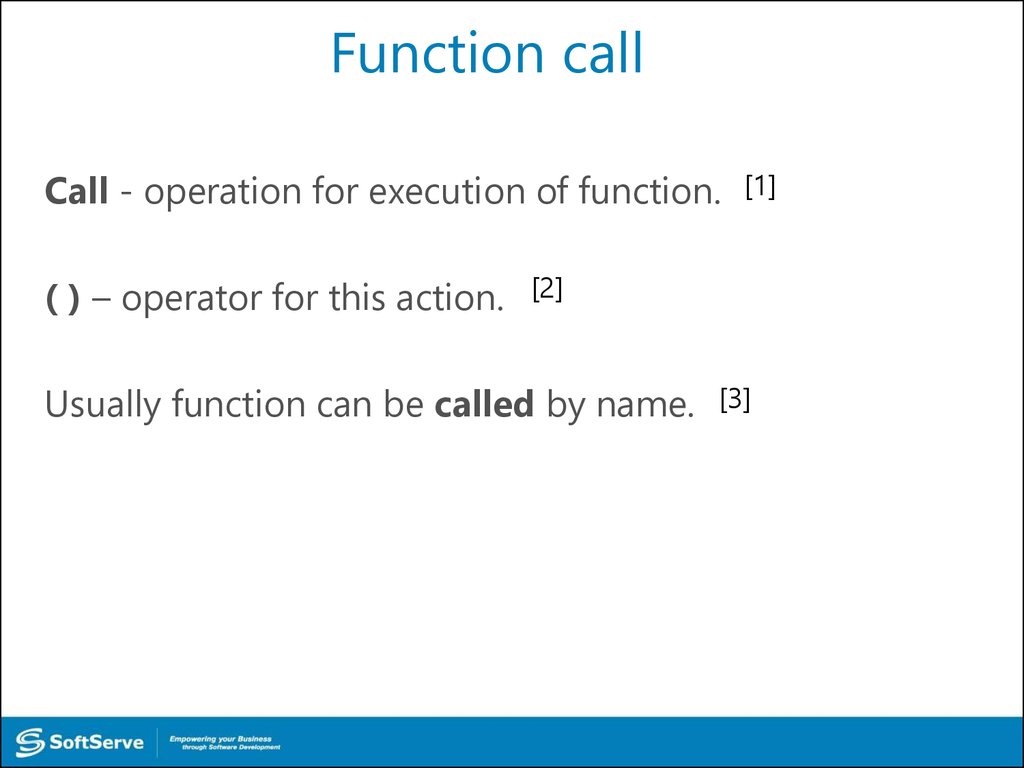
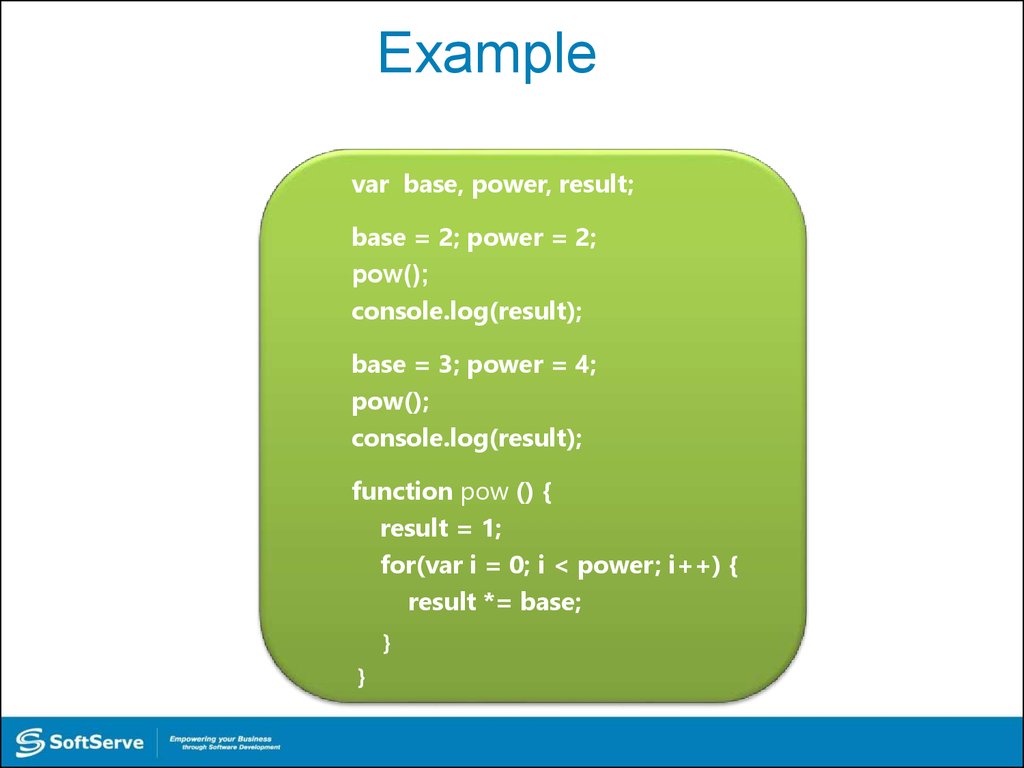
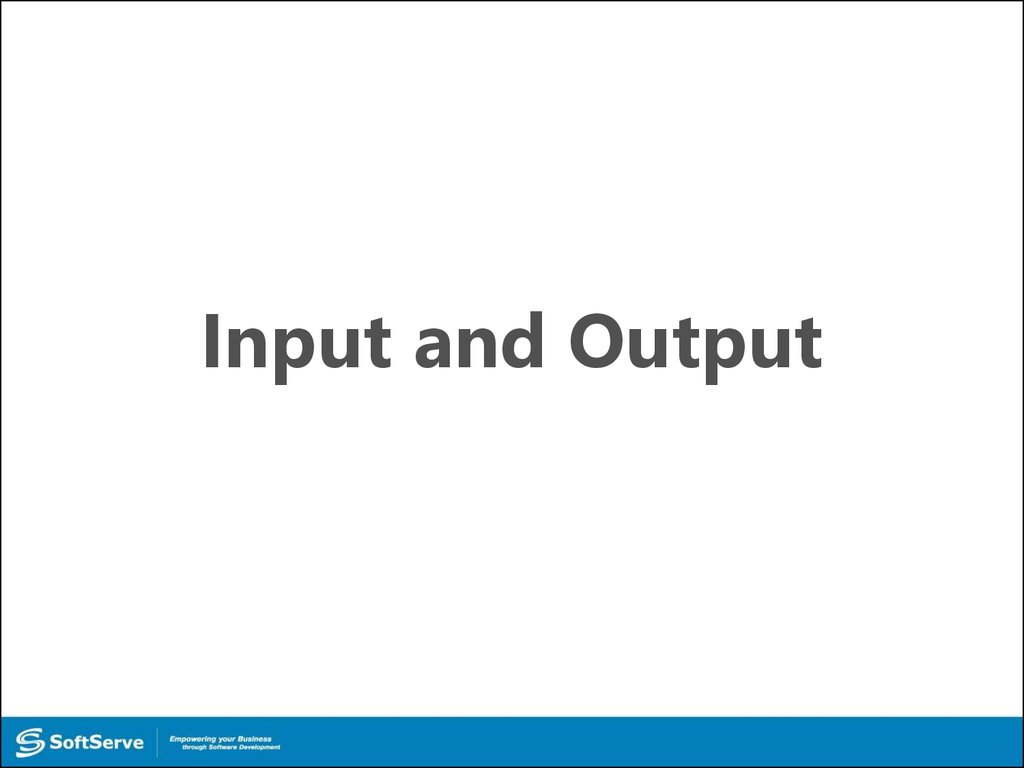
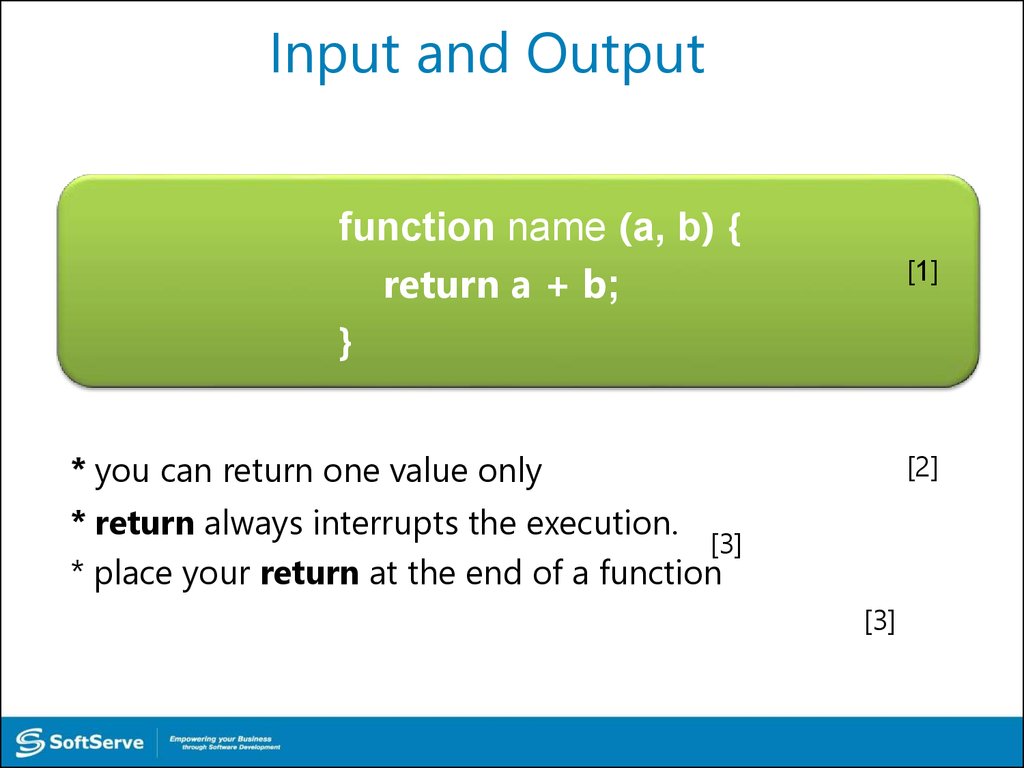
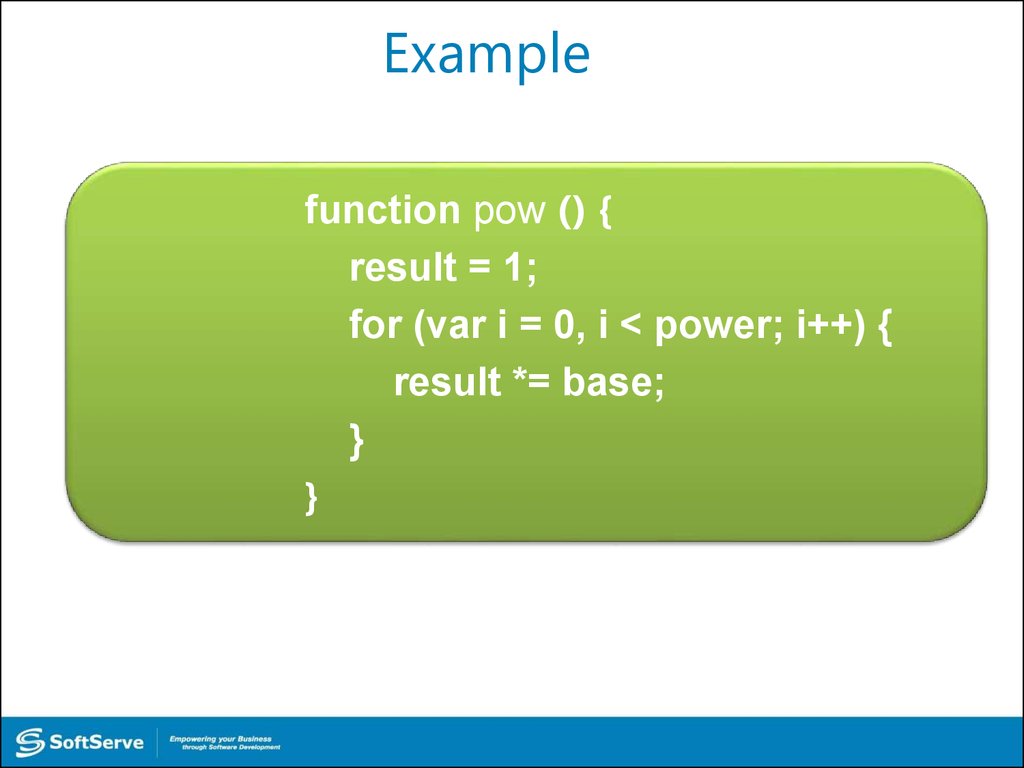
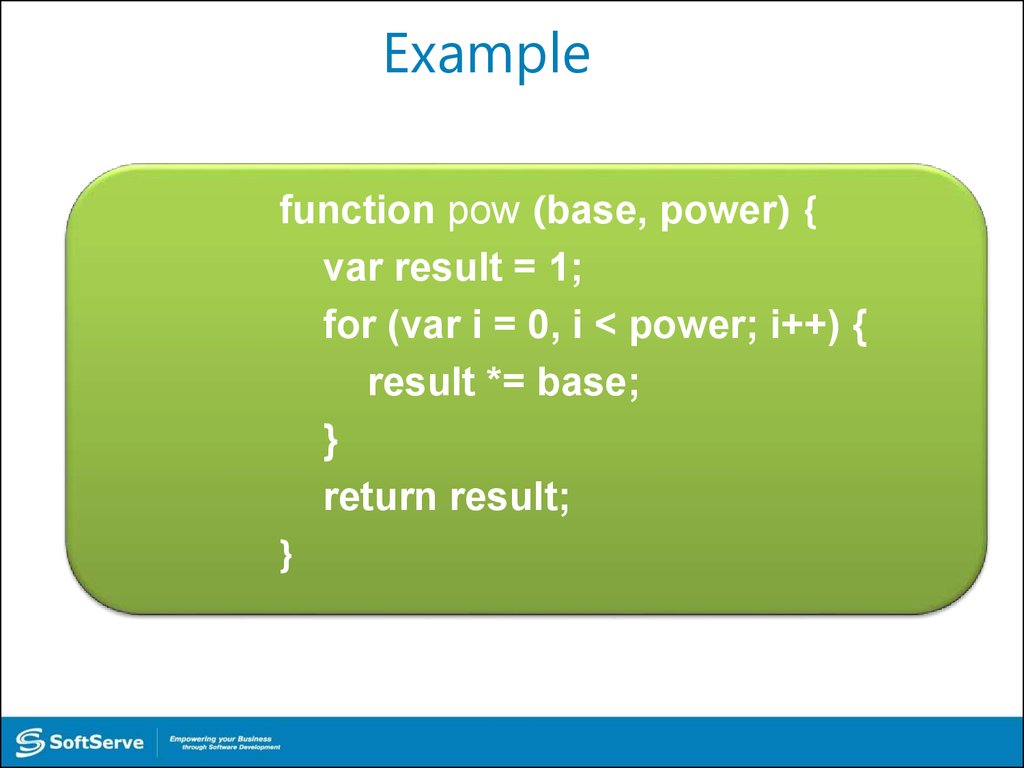
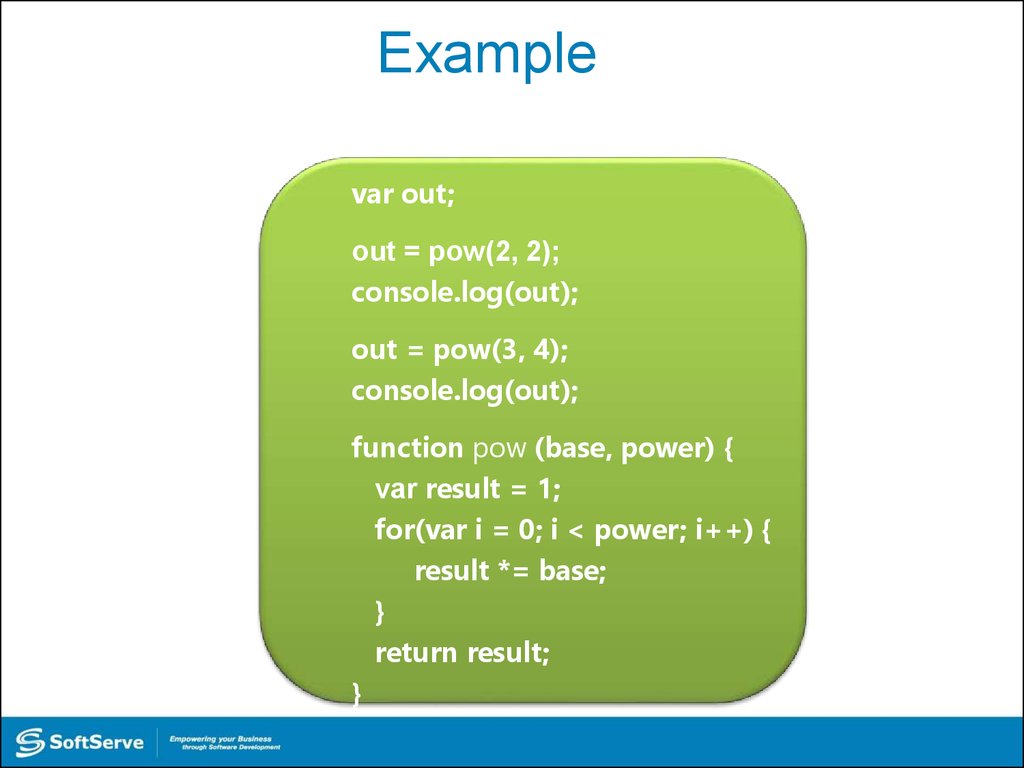
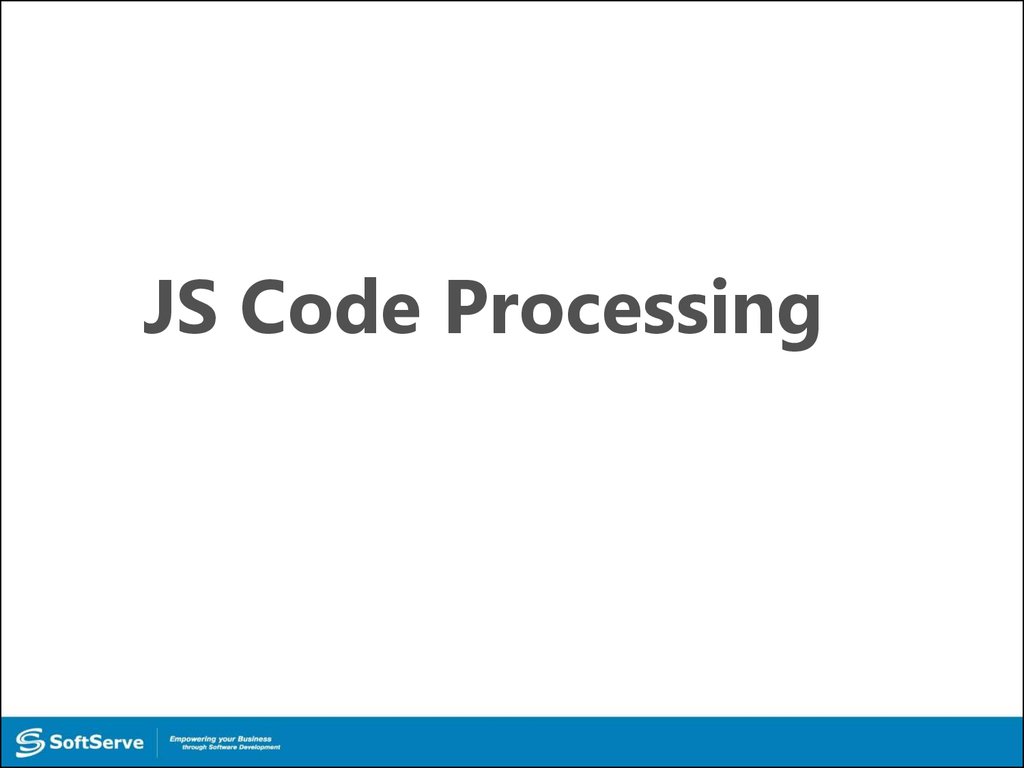
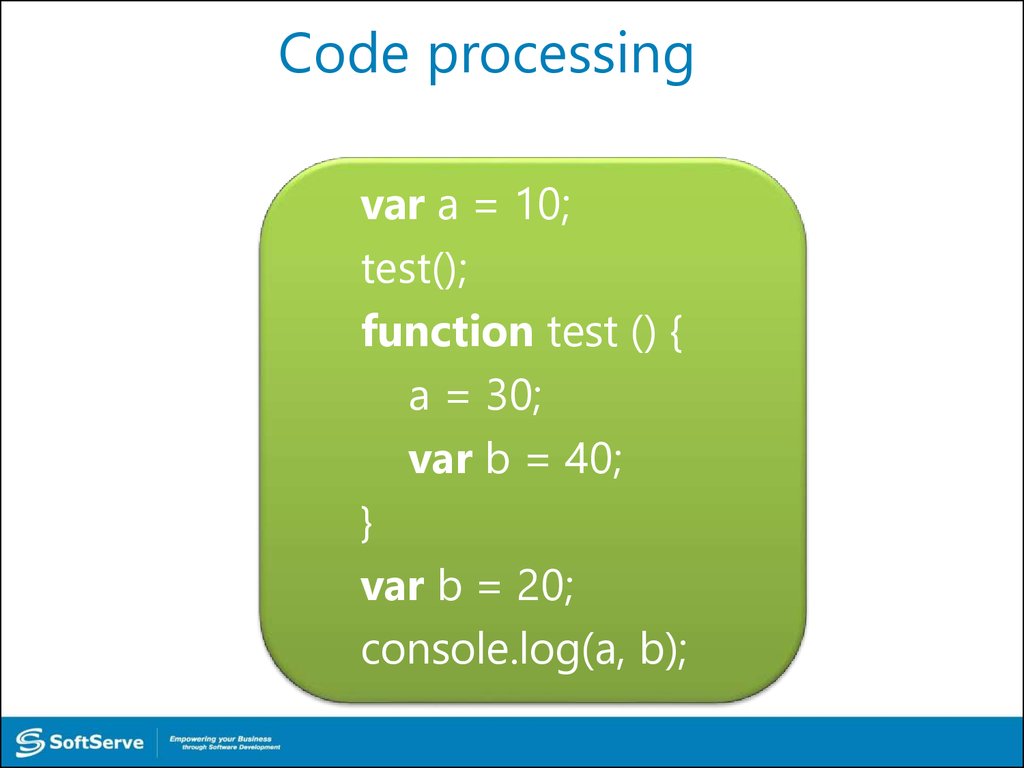

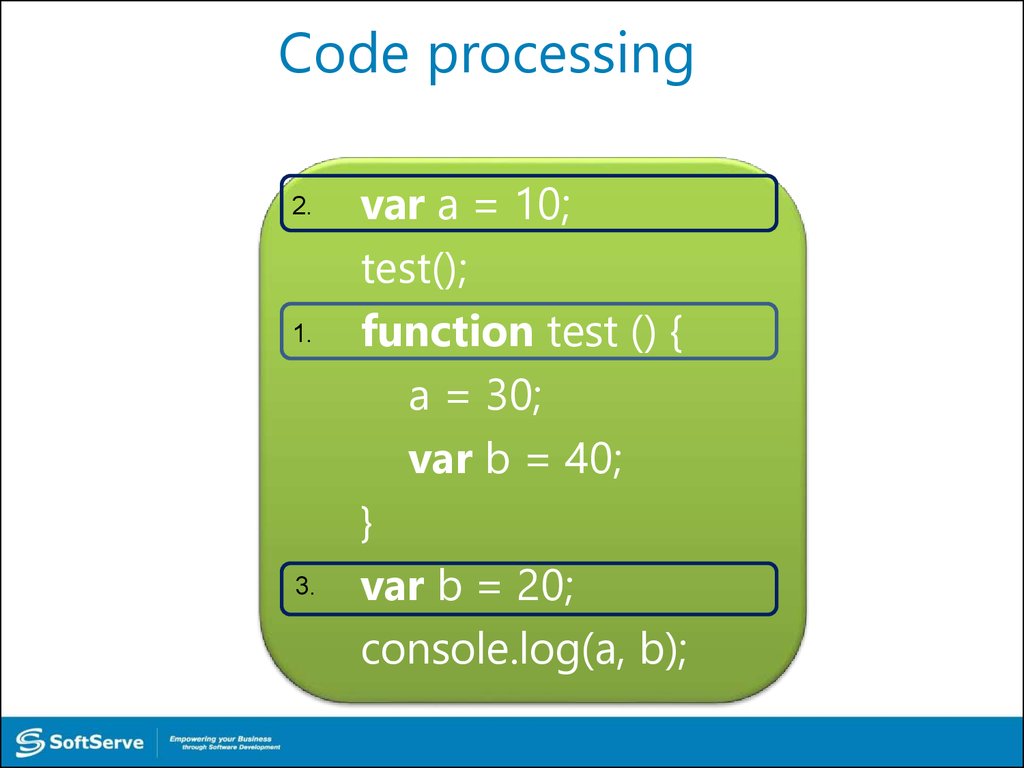
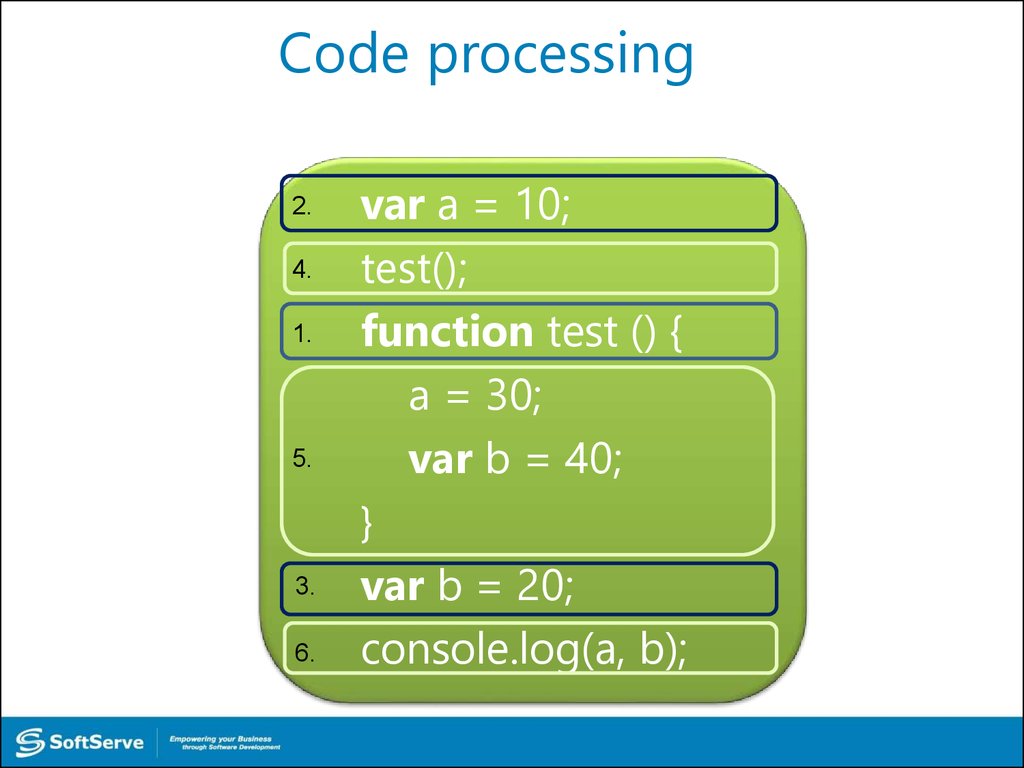
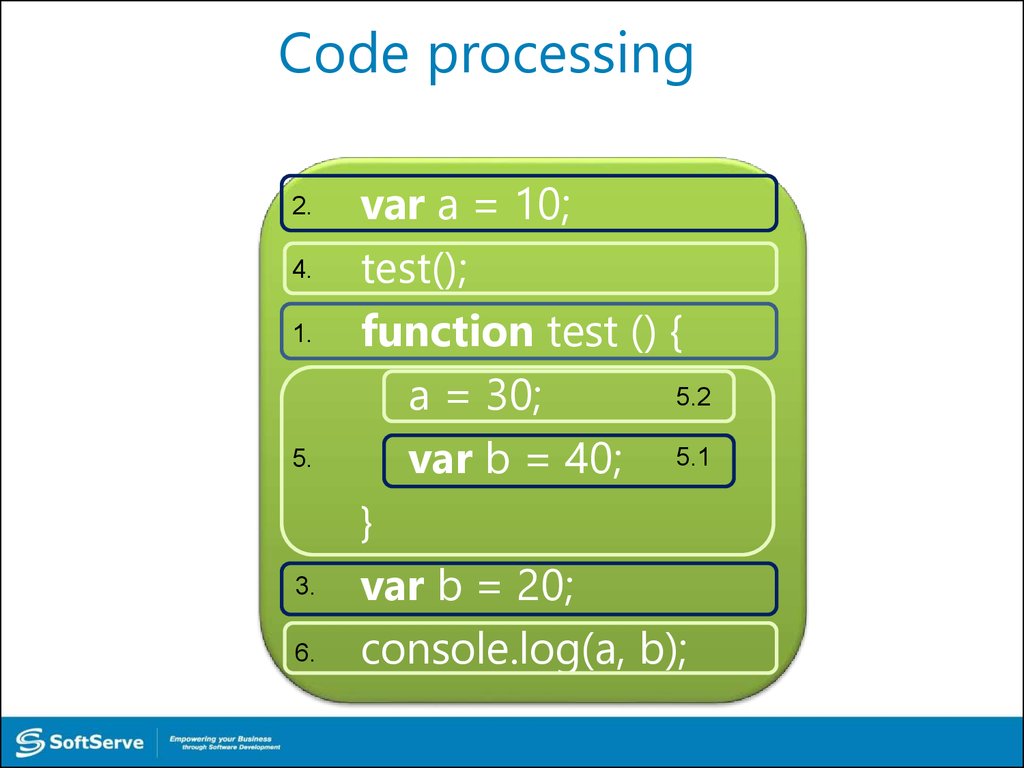
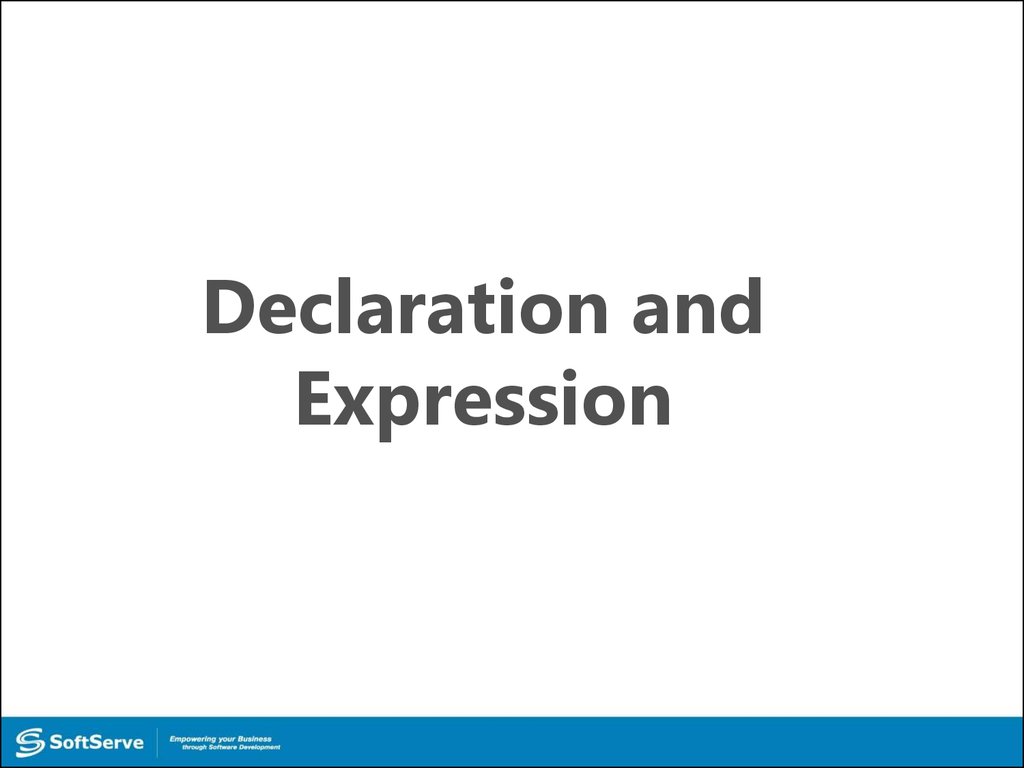
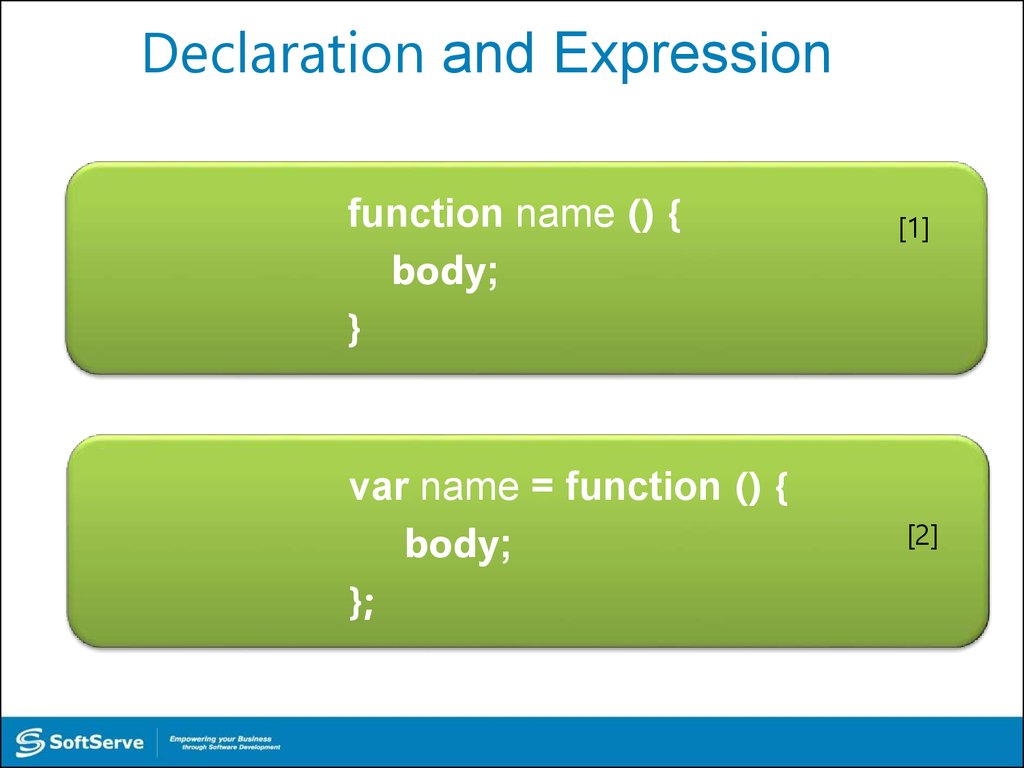
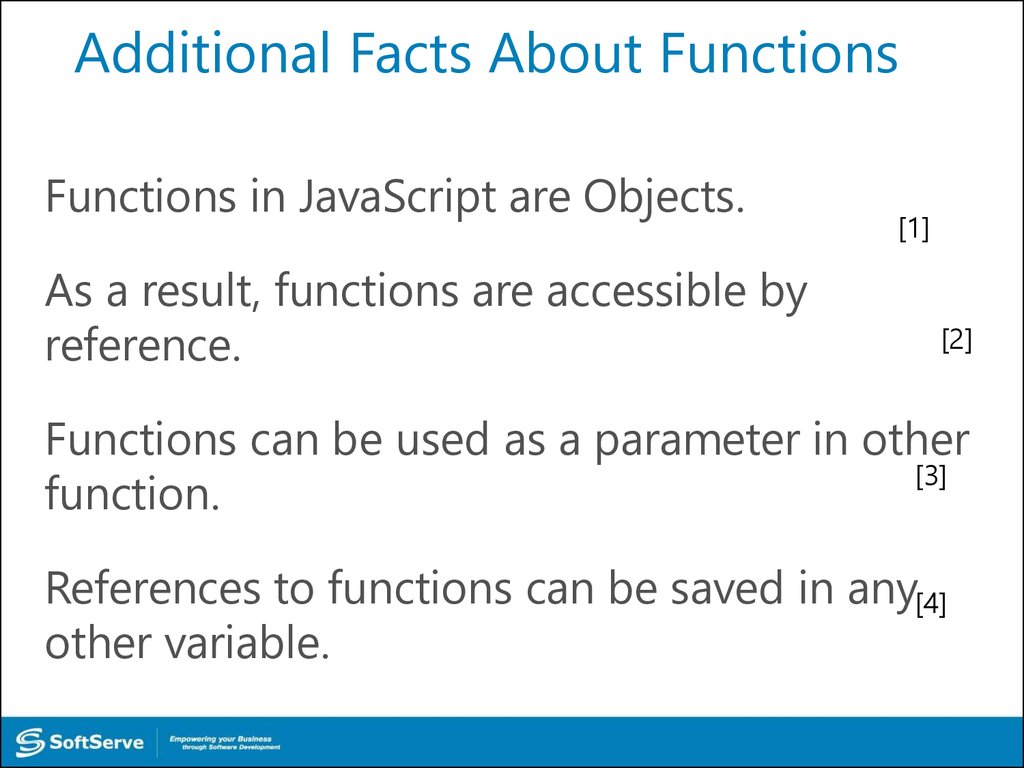
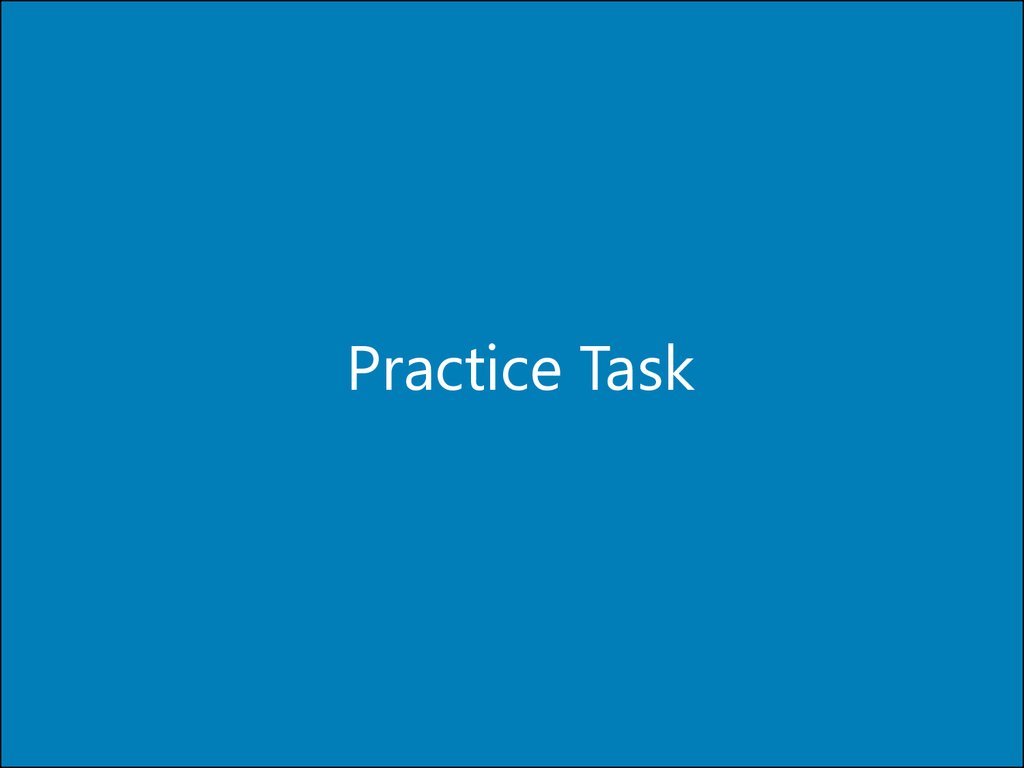

 Программирование
Программирование








